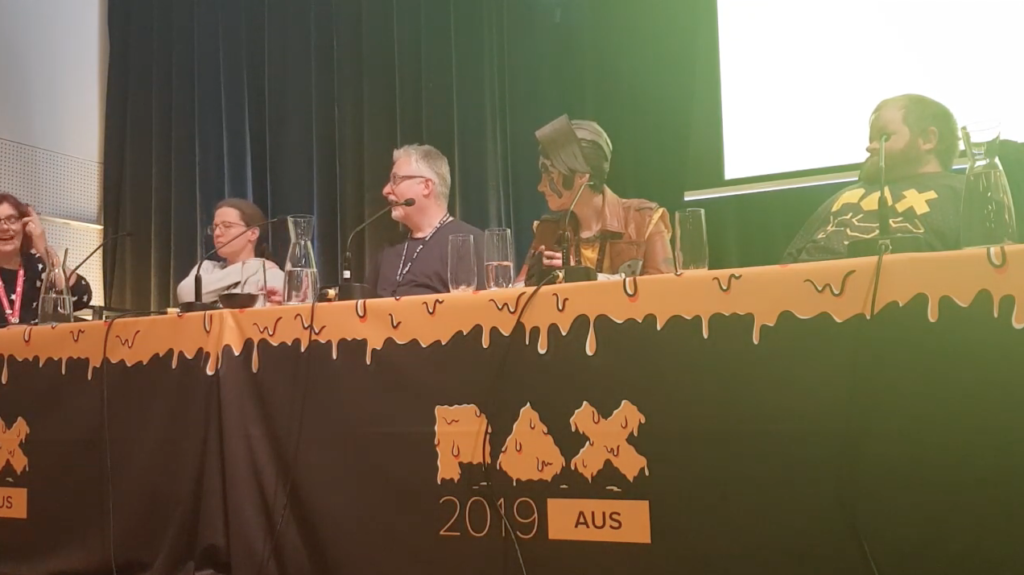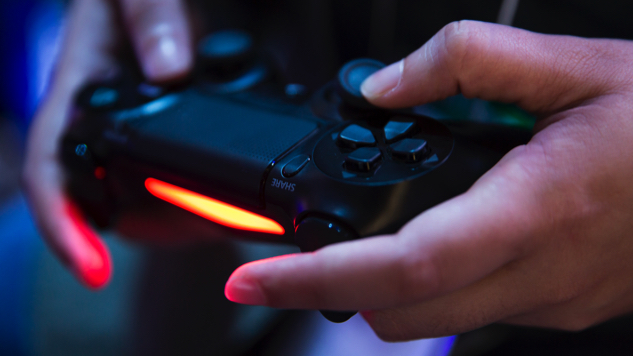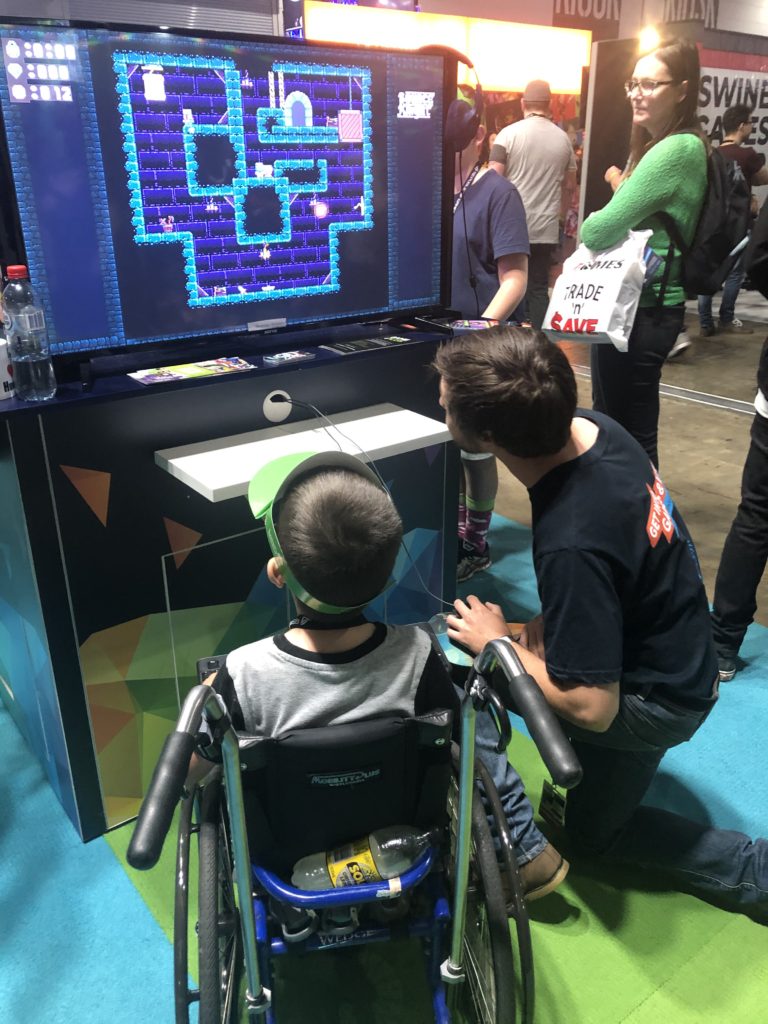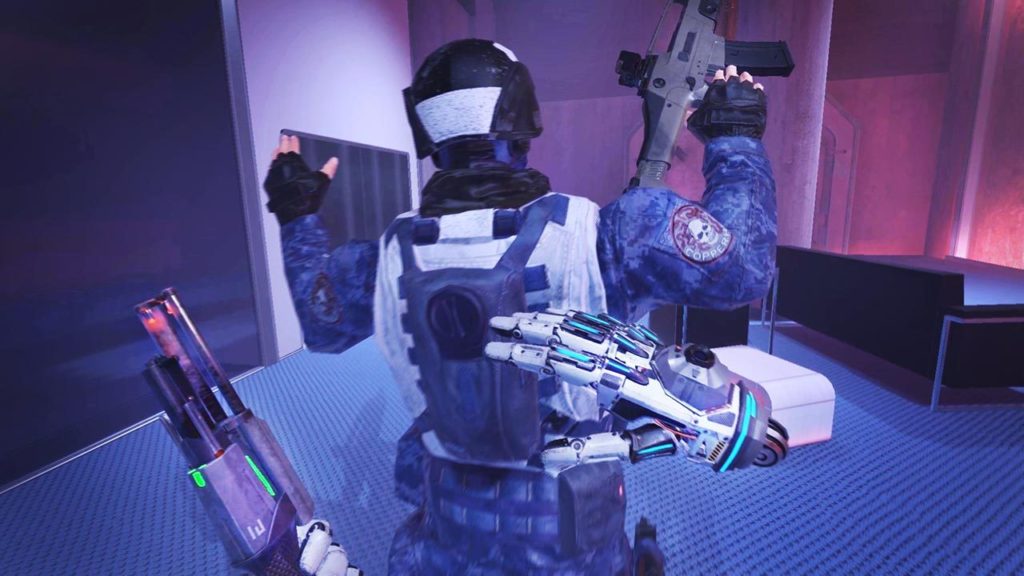
PAX Australia has given a platform to many under represented voices in the gaming industry throughout the years. The annual accessibility and mental health panels have had increasingly higher turnouts from both disabled and able bodied folk alike, and it’s encouraging to see how many people show up for these important conversations.
These panels are a vital part of the convention. They’re a great way to not only learn from the panelists speaking, but listen to attendees who live with impairments which prevent them from playing mainstream games. Too often we forget that elements of the games we play can be limiting for some players. It’s important to see the full scope of issues that are faced in the industry from all different perspectives.
This year’s PAX has acted as a personal ignitor to think about how we can act as a stronger support system for those who need it in the community. Whether you’re a developer, writer, gamer or anyone in between, we all need to be making an effort to educate ourselves on the broader issues and play an active part in improving them.
Stories From The Panels

During the mental health panel I attended, I asked a question about what kind of in-person, autism friendly social programs there were that related to gaming. I’ve mentioned in the past that my older brother is on the autism spectrum and attending conventions such as PAX are a great way to find new resources and games that we can play together.
Audience members chimed in immediately with suggestions for games and programs that are made specifically for people living on the spectrum. An attendee even tapped me on the shoulder to tell me about the board game Critical Core that is developed with autistic brains in mind. When the panel wrapped up, a woman approached me and thanked me for being so supportive of my brother. She shared that she faces her own struggles with OCD and lives with neurotypical siblings who don’t always understand what she goes through, so it was nice to see somebody putting in the effort.
I asked if I could give her a hug before swiftly leaving and proceeding to cry. It’s interactions like these that show our impact doesn’t have to come from our biggest achievements, sometimes it can be as small as asking a question at a panel.
Another comment that stood out to me was from a blind gamer attending the Developments in Accessibility panel. She mentioned that she found the term ‘video games’ to be problematic as it’s not inclusive of other interactive mediums such as audio games. Hearing her explain that she was physically unable to play mainstream games and share the experience with her friends was confronting and necessary to hear. The language we use surrounding the industry matters and it completely shifted my thinking on how I approach it when talking about games.
Accessibility Resources

The Deaf Accessibility Panel was a major highlight from the weekend! Speakers included Drew Taylor, the lead designer, producer and programmer at Blind Sparrow Interactive, as well as Nicholas Bruce, a media producer who works in the accessibility community. He is also deaf and diagnosed with auditory dyssynchrony.
Nicholas presented the Cochlear Headset that he created as well as his modified version of an Xbox Chat Headset. The inspiration for the headsets came from his experience with communication issues while playing online with friends. The alterations Bruce implemented allows for players with hearing impairments to communicate easier without having to sacrifice their hearings aids. This is wonderful news for hearing impaired gamers and you can find out more about the Cochlear Headset on Nicholas’s website.

Taylor spoke about the use of subtitles in Blind Sparrow’s upcoming release and I was blown away by just how many features there were for just one element of the game. Options such as changing colour for each character speaking, background shadows on text and choosing where the subtitles would be placed on screen were just a few presented in the gameplay shown. It was such an insightful look into the development process and encouraging to see how a studio is actively listening to audience feedback.
If you’re unable to attend conventions there are plenty of organisations to research that can provide helpful accessibility resources. Non for profits such as Checkpoint and Special Effect are some of my personal favourites, they do incredible work cultivating a supportive environment and educating the public on issues surrounding gaming.
The Show Floor

PAX Rising is without a doubt, one of the best parts of PAX. I spoke to some lovely graduates at the AIE Institute booth, Roderick Fitzgerald and CJ Gardner, who were working on and promoting the game Bounce Knight. Gardner is the sole developer on the game and explained to me that there was a man he consulted with during development who had lost his arm due to a car accident. CJ would ask him how he could alter the game to make it more comfortable for him and gained feedback on how to make the game playable for people with mobility issues. I loved that these hurdles were considered at the beginning of development and not as an afterthought.

Colour blindness is an issue that was thought of as well. Spaces in the levels that the player could interact with were highlighted in bright yellow, while non playable areas were coloured in blacks and purples. This made it easier for players to differentiate where to go and solve puzzles without being distracted by the visual aspects of the game. It was wonderful to see such young developers and students speaking so passionately about their upcoming games.
I also got a chance to demo the stealth adventure, Espire 1: VR Operative and spoke with Nick Acciarito, the Business Manager of Digital Lode. He mentioned that motion sickness was something that was heavily taken into account during development, as a lot of VR users complained that it put a damper on the overall experience of the games they play. I’m someone who tends to stray away from virtual reality games for that exact reason, so it was refreshing to take the headset off and feel completely fine.

I also found the controls really welcoming to players who may not be as familiar with virtual reality. A lot of the games core mechanics utilise body movements and motion rather than button presses so it didn’t feel overwhelming to figure out how to interact with the environment. Definitely a great one to pick up if you’re a fan of stealth.
Over the years I’ve become a lot more open to different genres and gameplay styles and I credit a lot of that to PAX Rising. Chatting to indie developers and hearing about the trials and errors of making a game has been such a wonderful experience and I think it’s necessary for attendees to take part in those conversations as well. Part of what makes the gaming industry so beautiful is hearing from those who are choosing to share stories that may not otherwise cross your mind. They often come from personal experiences and it can be quite daunting to share that with an audience that may only be accustomed to one type of play style.
It’s a big reason I believe in diversifying the content you subscribe to. For the gaming community to grow we have to engage with each other and listen to those whose voices aren’t amplified.
I’m incredibly proud of everyone that was showcased at this year’s PAX Australia. As this industry continues to evolve, it motivates me to make a more conscious effort in my writing and remember who I want to advocate for. For more information on next year’s PAX, give them a follow on Twitter or check their official website for more details.





Great article Emily, awesome read and fantastic to see all the cool stuff that came out of PAX 2019.